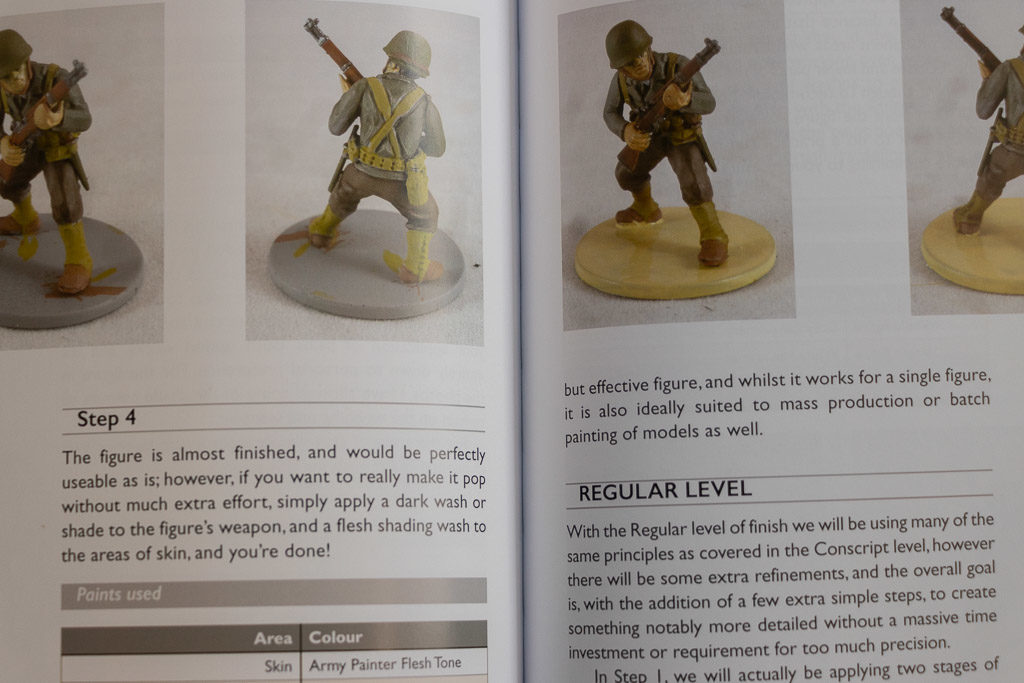
Painting Wargaming Figures: WWII In The Desert
by Andy Singleton
Publisher’s Site
Buy It On Amazon
As the title suggests, Painting Wargaming Figures: WWII In The Desert is a guide to painting the armies of British and Commonwealth, Italian, United States and German Armies of the North Africa Campaigns in World War II. Author Andy Singleton is a full time, professional figure painter.
Painting Wargaming Figures: WWII In the Desert is published in a perfect bound 17cm x 24.5 cm format with 158 glossy pages. the book has some 200 color illustrations. Nearly all of these are of figures in various stages of their “paint jobs.”
Singleton begins his volume with a brief discussion of the various “tools of the trade”: hobby knives, side cutters, files, glue, brushes and the like. A discussion on painting techniques, such as drybrushing, washes and glazing follows. I suspect that most experienced miniature wargamers will just skim past this.
The meat of the book is in the step-by-step painting guides. For each nationality, Singleton offers step-by-step instructions for producing figures at “conscript”, “regular” and “elite” levels. The ratings refer not the quality of the troops, but to the level of painting detail and skill required. Novice painters can start at the “conscript” level to quickly start fielding an army. As confidence and skill grows, a painter can step up to the higher levels.
In each step, Singleton includes a chart of suggested colors, describes which parts of the figure to paint and which colors to use on which areas of the figure. He also suggests brush sizes and painting techniques (dry brushing, for example).
If I were a beginning painter, I think this volume would serve very nicely to help me get started. As it stands, though, I’ve been at it for nearly fifty years and have probably painted some ten thousand figures. Still, I still gleaned some good information from the “Elite” instructions, particularly some aspects of using washes that I had not considered.



